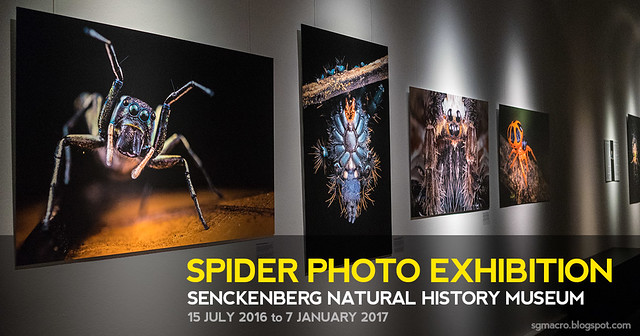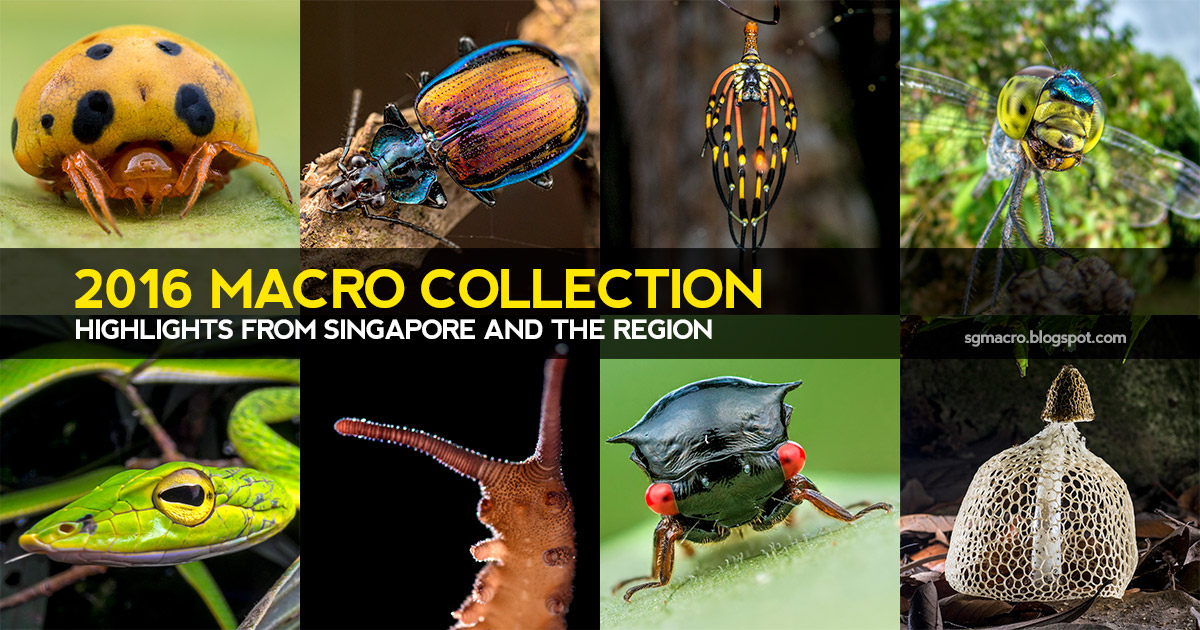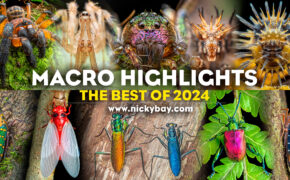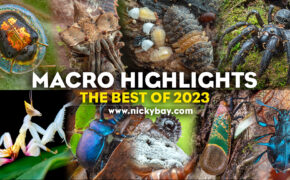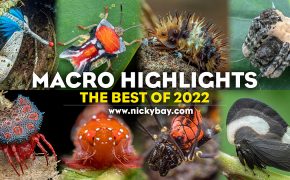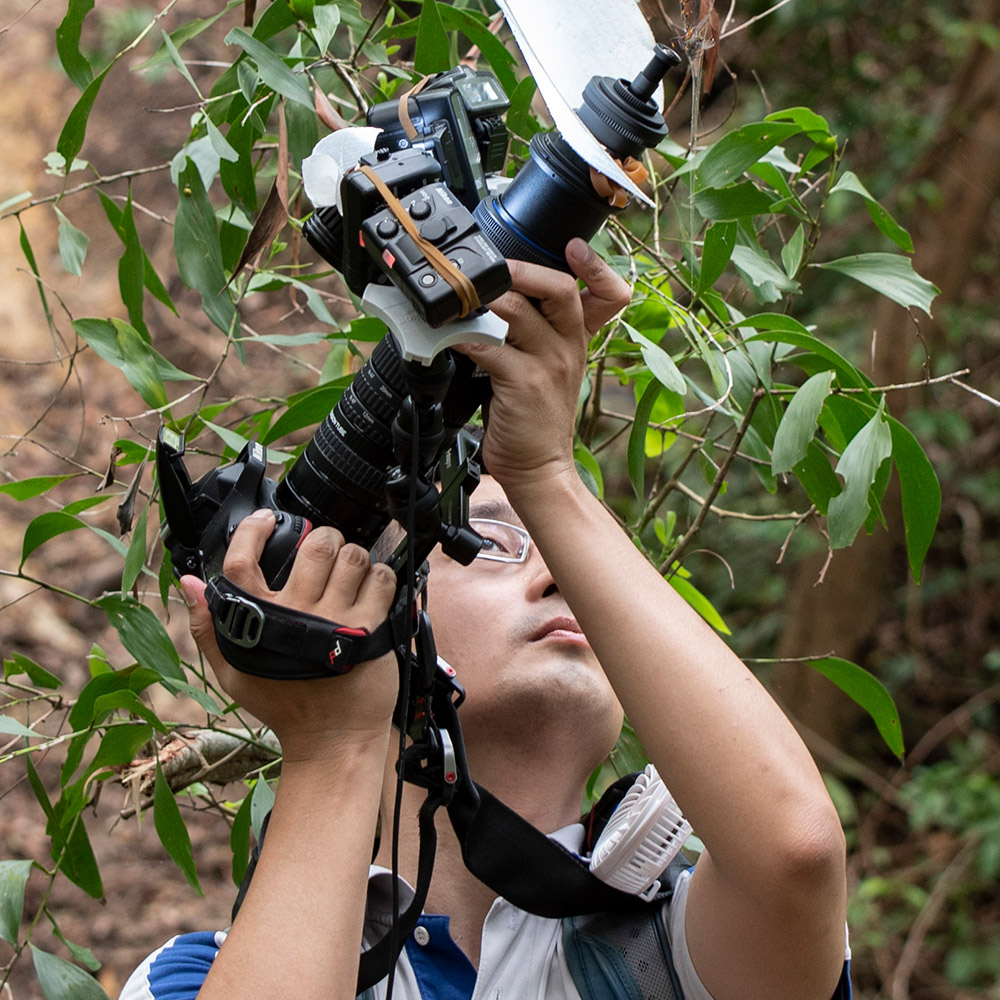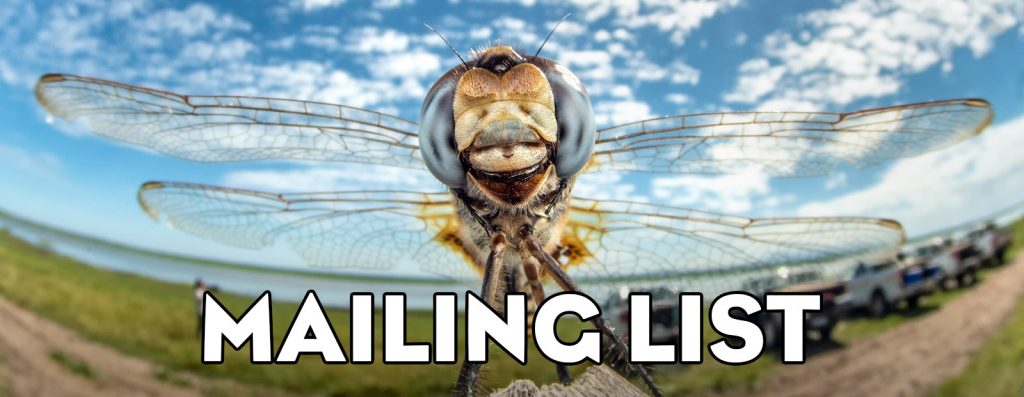2016 Macro Collection: Highlights from Singapore and the Region
As 2016 draws to a close, it is time for my annual photo spam with the year’s highlights. While I did fewer expeditions beyond Singapore, more work was done in documenting lifers and experimenting with different techniques in wide angle close-ups, back-lighting and ultraviolet fluorescence photography. I’ve also held my second photo exhibition in Europe, which will still be there til 7th Jan 2017. If you are a museum curator or know of museum curators who might be interested in my work, please contact me to discuss about any exhibition work that we could do together!
Blog Redesign and Photo Checklists
Towards the end of 2016, I did a revamp on the blog’s design to be responsive and to display properly on mobile platforms. I’m also adding several personal photo checklists of the critters that I’ve documented before. See the main menu under “Checklists” for the list of what I have so far.
Thank You
I would like to take this opportunity to thank my macro shooting buddies who have selflessly shared their finds and ideas in all of our trips. We’ve shared many treasured moments in the field, and I’m sure there’s many more to come. Thanks to Melvyn, Chris, Victor, David, Seawei, James for the countless trips and finds. Andrew, Alfred and Sagita… when are you guys coming back??
Heartfelt thanks to my wife for supporting the kind of work that I’m getting myself involved with and for tolerating the late nights of absence from home when out in the field.
How to Read this Massive Post
The unapologetically large number of photos in this post are sorted in taxonomic order and as usual, I will be forcing spider photos on you first. Just do a search in this post to jump to any specific orders that you are interested in. This post highlights many lifers and interesting points to make, and is not a showcase of best photos of the year. Please don’t expect too much. 🙂
Most photos were taken in Singapore, with a few exceptions from trips to Malaysia. Nevertheless, the diversity hasn’t ceased to amaze, and I hope the forest microfauna will continue to flourish in the years to come.
Button orb weaver (Anepsion sp.)
Sometimes called the pizza spider due to the exceptionally flat abdomen, I had lost this tiny little orb weaver once last year, and finally got some decent shots of it. Saw two males this year and both were simply dangling under some leaves rather than on their orb webs.
Trashline orb weaver spider (Cyclosa sp.)
Not uncommon, but one of my favorite examples of spider stabilimentum.
Bird dropping spider (Cyrtarachne sp.)
This Cyrtarachne is common in Singapore but the undocumented micromovements within the abdomen have been baffling myself and other arachnologists. I did a video on the pulsating spider and it was subsequently published on National Geographic.
Tent web spider (Cyrtophora cicatrosa)
A tiny tent web spider, and surprisingly one that I’ve never photographed before but found just next to a path with high human traffic.
Red tent spider (Cyrtophora unicolor)
Another common Cyrtophora, but this time with an egg sac and fluorescing under ultraviolet. This spider typically builds a massive tent web but dismantles it and presumably consumes the silk prior to building her egg sac. Mesmerising sight! I also did a video showcasing ultraviolet fluorescence photography recently.
Red tent spider (Cyrtophora unicolor)
An extreme wide angle close up using an experimental fisheye cctv setup to exaggerate the spider’s size. Interestingly, many thought that the little bumps on the abdomen were “hundreds of eyes”.
Spiny orb weaver (Gasteracantha sp.)
These spiny orb weavers tend to build their orb webs above our heads, which allows for this shot with the sky as the background.
Ladybird spider (Paraplectana sp.)
This yellow ladybird spider had been on my wish list for a long time, with numerous unfruitful trips to known habitats. On the last day of 2016, we were pleasantly rewarded with a relatively large specimen! Check out my earlier article on ladybird mimicry and more on these spiders.
Bird dung spider (Pasilobus sp.)
Classic ultraviolet fluorescence in the bird dung spider, definitely one of my favorites!
Tree stump orb weaver (Poltys sp.)
Many like to photograph the tree stump orb weavers on a branch or tree stump, so this year, I took many shots of it on its orb web and placed a light behind to accentuate the silk.
Wrap-round orb weaver (Talthybia sp.)
In October, I was privileged to be one of the first few to get to test the new Olympus STF-8 macro twin flash which is touted to be light-weight and weather-proof. Smallest twin flash system ever and looks like a mini version of my own setup. This was one of the test shots with a loaned Olympus OMD-EM1 Mark 1 and Olympus 60mm macro. You can view my series of test shots with this M4/3 setup here.
This is a close-up of the wrap-around orb weaver. See if you can locate the anterior and posterior lateral eyes!
Brush-footed trapdoor spider (Barychelidae)
Close up of a large female trapdoor spider. Odd that we find the females out in the open as well as I always assumed that only the males went out to search for mates.
Brush-footed trapdoor spider (Barychelidae)
Dense iridescent scopulae on metatarsi and tarsi I and II, and even on the palps!
Ant-like sac spider (Sphecotypus sp.)
Glad to have this stunning ant-mimic crossed off my wish list! It has an obvious constriction in the middle of its cephalothorax to enhance its ant disguise.
Ant Mimicry (Myrmarachne vs Polyrhachis)
Happened to see both the spider and the ant it was mimicking on the same plant and did a side by side comparison.
Wandering spider (Ctenus sp.)
One of my first few attempts at wide angle close ups using my wife’s Sony A7 and Voigtlander 15mm with an M to E-mount adapter and some extension tubes. This Ctenus is ideal since he lets me go really really close (1cm to 2cm), which is required in wide angle closeups.
Wolf spider (Hippasa sp.)
Classic Hippasa pose. These sheets of web can be easily spotted early in the morning with the condensation of morning dew, but the skittish owners would dart into their hideouts just as easily as you’d find them.
Ornamental tree trunk spider (Herennia sp.)
I’ve seen lots of Herennia before but this stunning specimen, probably a juvenile, is probably the most beautiful one that I’ve ever seen!
Golden orb weaver (Nephila sp.)
Candy cane in the forest. Ridiculously common spider but displaying a brilliant combination of orange and yellow when fresh out of her moult.
Lynx spider (Hamadruas sp.)
A large Hamadruas guarding her spiderlings with a delightful hue of maroon!
Lynx spider (Oxyopes sp.)
Close up portrait of a very common male Oxyopes with the loaned M4/3 setup.
Pseudo orb weaver spider (Fecenia sp.)
Always wanted to photograph the full pseudo orb web of the Fecenia, which usually hides inside a tightly rolled leaf in the middle of its web. Its long, hairy legs can be seen sticking out from the rolled leaf in anticipation of prey on its web.
Daddy-long-legs spider (Pholcidae)
These seemingly fragile looking spiders can be quite proficient in catching prey, such as this trap-jaw ant.
Daddy-long-legs spider (Pholcidae)
Spiderling legs already visible on the eggs of this mama-to-be.
Daddy-long-legs spider (Pholcidae)
Explosion of babies!
Daddy-long-legs spider (Pholcidae)
Another baby explosion, this time of a different genus.
Daddy-long-legs spider (Pholcidae)
Boy meets girl, and realizes that she is already taken when he saw her holding her future generation.
Jumping Spiders: A 2017 Calendar with the Most Endearing Arachnids
As 2017 approaches, I’ve put together a series of jumping spider portraits for a 2017 Calendar. Many languages and country holidays available!
Jumping spiders from Maliau Basin
Happened to process MANY salticid portraits in a single day and decided to make a little collage out of it.
Jumping spider (Hyllus sp.)
Juvenile Hyllus but always a joy to photograph!
Jumping spider (Onomastus sp.)
This Onomastus has the largest palps that I’ve ever seen, and it is not even a mature specimen. The mature male would have really large and complex palps, which is probably why the species is Onomastus complexipalpis.
Jumping spider (Parabathippus sp.)
Very common salticid guarding her eggs.
Jumping spider (Phaeacius sp.)
Exclusively hunts on tree trunks, and sometimes called the “sad” spider because it is almost always looking down. Here’s a more cheerful view of it, probably due to the nice supper catch.
Jumping spider (Portia sp.)
A male Portia resting on its web. A female was also seen nearby.
Jumping spider (Thiania sp.)
Not the usual Thiania so it deserves a spot here!
51 Huntsman Spider Portraits from Singapore
A tribute to Singapore’s 51st Birthday! Check out the details of each portrait here.
Huntsman spider (Gnathopalystes sp.)
Check out the little white moustache!
Huntsman spider (Gnathopalystes sp.)
Several Gnathopalystes exhibit ultraviolet fluorescence, and this appears to be the most flamboyant of all!
Huntsman spider (Heteropoda davidbowie)
Another wide angle attempt with the Sony A7 and Voigtlander 15mm. Wide angle perspective makes the spider look larger!
Huntsman spider (Heteropoda sp.)
Largest cluster of huntsman spiderlings still on its egg sac!
Huntsman spider (Heteropoda sp.)
This Heteropoda looks close to H. boiei but I’m not too sure…
Lichen huntsman spider (Pandercetes sp.)
Visited the Lentor Forest that was slated to be cleared to make way for residential development, and took this portrait of a very common Pandercetes.
Huntsman spider (Rhitymna sp.)
Another genus off my wish list! Seawei found not one but a pair of Rhitymna on trees next to each other. Unfortunately despite the size, they still managed to disappear right before our eyes…
Huntsman spider (Sparassidae)
A very very happy huntsman with a huge catch!~
Huntsman spider (Sparassidae)
Haven’t figured this one out yet, but not commonly seen in Singapore.
Twig-like comb-footed spider (Ariamnes sp.)
First time seeing the abdomen twist so many times!
Mirror-comb-footed spider animation
I did a better animation of the abdominal mirror-like expansion/contraction on the Thwaitesia and the article got kind of viral again.
Tarantula (Theraphosidae)
Wide angle attempt on this blue tarantula, but the colours turned out a little funny. Probably a wrong white balance chosen.
Ant-mimic crab spider (Amyciaea sp.)
Classic mimicry and predation of the ant-mimic crab spider with the red weaver ant.
Bird dung crab spider (Phrynarachne sp.)
This spider had been on my wish list for quite a while. When we finally got to see it, it had a remarkably radiating nest and egg sac. In fact, the spiderlings were already hatched but we didn’t get much shots of the little ones.
Crab spider (Runcinia sp.)
Captivating ultraviolet fluorescence on a Runcinia. The fluorescence appears to be common in thomisids, possibly because they are ambush predators and the UV fluorescence might have something to do with the UV fluorescence in flowers that attracts pollinating insects.
Crab spider (Stiphropus sp.)
Very unique looking thomisid with an egg sac within the tree trunk.
Crab spider (Strigoplus sp.)
Strigoplus is common in our forests but this had particularly striking pink patches!Crab spiders (Thomisus sp.)
Opportunistic male going into the female at her most vulnerable moment. Probably a safer tactic for the male.
Crab spider (Tmarus sp.)
This Tmarus had been spotted several times in the mangroves. First saw it in Malaysia and glad to see it in Singapore as well.
Crab spider (Thomisidae)
An unidentified thomisid with interesting patterns on its body with light shining through it.
Feather-legged spider (Octonoba sp.)
A rare uloborid genus carrying her egg sac.
Excavator harvestman (Epedanidae)
Favorite harvestman. We called this the excavator. It looked even more awesome with its ultraviolet fluorescence.
Excavator harvestman (Epedanidae)
Excellent subject for back-lighting as well, as most parts of its body allows light to pass though.
Harvestman (Podoctidae)
Looks really common but a close up reveals lots of beautiful details!
Shorttailed whip scorpion (Schizomida)
These arachnids are almost as small as pseudoscorpions, just much harder to see and they run really fast.
Black forest scorpion (Heterometrus sp.)
Wide angle attempt on this giant scorpion. A close working distance of less than 4cm allows better light diffusion on its otherwise dark body, bringing out the blue pretty well.
Tailless whip scorpion (Charon sp.)
Finally got to do a wide angle close up on a large amblypygid, at a perfect angle perched at the edge of a rotten log. Still surprised that it stood still enough for me to take a few shots as these are usually quite skittish.
Tailless whip scorpion (Amblypygi)
Much smaller amblypygid that stood up, leaving just enough space for me to push some light through from behind.
Whip scorpion (Thelyphonida)
Also known as vinegaroons, I brought my night macro workshop participants out on a practice trip and had a chance to try a wide angle close up again!
Pseudoscorpions (Pseudoscorpionida)
I’ve always wanted to photograph a mother pseudoscorpion carrying her babies, but I guess this is still a small step forward!
Jewel beetle (Belionota prasina)
I hadn’t paid much attention to these lovely beetles in prior years, and added a few species to my photo collection this year. This Belionota prasina is probably the largest jewel beetle in Singapore. For other jewel beetles in my collection, link to my Jewel Beetles Checklist.
Jewel beetle (Habroloma sp.)
Most other jewel beetles here are tiny and often ignored. This was probably 3mm long.
Jewel beetle (Trachys sp.)
Another tiny beauty, also about 3mm long.
Soldier beetle (Cantharidae)
This soldier beetle kept arching its abdomen upwards, allowing for a beautiful composition.
Ground beetle (Physodera eschscholtzii)
Hands down the most magnificent ground beetle in Singapore. Can’t ever get enough of it. See the other ground beetles that I’ve recorded so far in my Ground Beetles Checklist.
Ground beetle larva (Carabidae)
Even the larva was stunning.
Longhorn beetle (Tetraglenes sp.)
We found this small little cerambycid with split eyes on Coney Island. A great addition to my Longhorn Beetles Checklist.
Longhorn beetle (Dystasia cf. circulata)
Too many interesting cerambycids this year, so I’ll just add a few random ones here.
Stingless bee mimic longhorn beetle (Pectinocallimus sp.)
An extremely rare longhorn beetle that mimics a stingless bee. The adult doesn’t live for long, and we’ve seen this twice on dangling vines.
Leaf beetle (Aulacolepis decorata)
Spotted this little leaf beetle twice this year. It has little tufts of setae on its dorsum, which reminded me of the Portia spider.
Tortoise beetle (Chiridopsis sp.)
My favorite tortoise beetle this year, love the colours and patterns! See more in my Tortoise Beetle Checklist.
Golden tortoise beetle (Aspidimorpha furcata)
A surprise golden find, and a tick off my wish list! Really difficult to light this one up well.
Leaf beetle (Hoplosaenidea singaporensis)
One of the common but skittish little leaf beetles that finally had an ID, thanks to the kind folks on Facebook.
Ladybird beetle (Scymnus sp.) preying on an aphid
If you’ve not read it already, I recently published a little article on the story behind the name “ladybird beetle”.
Handsome fungus beetle (Eumorphus marginatus)
We like to call this the violin fungus beetle, although the real violin beetle still eludes us. If you are interested in more of these beetles, link to the handsome fungus beetles checklist.
Handsome fungus beetle (Spathomeles sp.)
Really handsome specimen, made it to the list for the two elytral spines.
Firefly (Lampyridae)
Fireflies are not flies, but beetles. Another misnomer. This is a feeble attempt to record the ventral view.
Trilobite beetles (Platerodrilus sp.)
I consolidated all my trilobite beetle photos into a checklist, after National Geographic did a recent coverage on trilobite beetles found in Singapore.
Ship timber beetle (Lymexylidae)
Been many years since my last sighting of this beetle. Literally dropped from the sky while we were looking at scorpions.
Sap beetle (Nitidulidae)
This flat and tiny little beetle is often referred by us as the petri dish beetle.
Rhinoceros beetle (Xylotrupes gideon)
Wide angle attempt at a rhino beetle that Victor found in NTU.
Shining fungus beetle (Scaphidiinae)
Not too uncommon but still a lifer for me!
Darkling beetle (Eucyrtus cf. pretiosus)
I actually have many new darkling beetles in my collection, but there would be too many to list here. Instead, you may like to view my Darkling Beetles Checklist.
Spittlebug (Cercopidae)
This spittlebug was fresh out from its moult, and still within its frothy layer of protection.
Cicada (Cicadidae)
Also fresh from it smoult, the colours on this cicada were slightly enhanced with a light from behind.
False lanternfly (Dictyopharidae)
Another candy cane bug with a brilliant splash of colours!
False lanternfly nymph (Dictyopharidae)
At first thought to be a lantern bug nymph, but turned out to be a false lanternfly nymph. (different families) A ray of sun hits the snout for a little back-lighting effect.
Planthopper nymph (Fulgoroidea)
Accentuating the waxy tail of this planthopper nymph.
Lantern bug (Pyrops pyrorhynchus)
Rudolf found at night! Although they are called lantern bugs, their snouts do not glow at night. A light from behind gave it a faint glow though.
Lantern bug (Pyrops whiteheadi)
Another similar attempt with the entire snout lighted up.
Planthopper (Fulgoroidea)
Planthopper just out from its moult and hanging out to dry. The colours at this stage would change rapidly while it dries and pumps out its wings.
Planthopper (Dichoptera sp.)
Close up of a common fulgorid.
Treehopper (Coccosterphus sp.)
Plain looking membracid until viewed up close. Love the wing venation.
Treehopper (Tricentrus fulgidus)
Black reflective subjects are a pain to photograph, but this was too cute to give it a pass!
Globular shield bug (Plataspidae)
Hadn’t noticed these bugs before, and turned out to be pretty cute with the short body.
Globular shield bug (Plataspidae)
Found another one!
Stink bug hatchlings (Pentatomidae)
Last year, I did a very rough shot of this scene, and am glad to be able to do a better version this year. Interestingly, there are almost always 12 eggs in each batch.
Stink bug babies (Pentatomidae)
These babies appear to be more mature, and almost ready to leave its nest.
Giant shield bug (Lyramorpha sp.)
The mother here would stay behind to look after her young, unlike the examples above. Notice the little ones huddled under her abdomen.
Ant-snatching assassin bug nymph (Acanthaspis sp.)
This little assassin makes it to the list. Every year.
Resin assassin bug (Amulius sp.)
There was a little discussion on where the resin on the forelegs comes from. Was it from its own saliva, or was it from the tree’s sap?
Moth-like planthopper (Ricaniidae)
These “fresh from moult” scenes are really perfect for back-lighting.
Planthopper nymph (Ricaniidae)
Highlighting the fanned waxy tail of the ricaniid nymph.
Pill cockroach (Perishpaerus sp.)
Old vs new. The pill cockroach fresh from its moult, sports a brilliant red/orange and the contrast with its eventual colour is illustrated well here.
Cockroach nymph (Blattodea)
No idea what cockroach this is, but it is pretty!
Robberfly (Asilidae) in cordyceps fungus
Cordyceps fungus is a common sight on robberflies, but never ceases to be a good topic for discussion.
Mosquito (Stegomyia albopicta)
More commonly known as the Aedes mosquito. Yes the one that spreads dengue, chikungunya, yellow fever, and most recently the Zika virus. Thank you David for the sacrifice!!
Soldier fly (Stratiomyidae)
Close ups on the eyes of these charismatic flies would almost always make the annual list.
Chalcid wasp parasitoids (Trichogramma sp.)
With a light behind, I was able to see the little parasitoids inside the eggs.
Ichneumon wasp (Pimplinae)
I don’t shoot much wasps, so most are lifers anyway!
Caterpillar with parasitoid wasps
The host had already shriveled, and the parasitoids are obviously fat!
Ant (Dolichoderus sp.)
Transporting a little one?
5 Mysterious Structures from the World’s Smallest Architects (Psychidae)
I wrote an article on tiny structures created by nature’s tiny architects, focusing on the little log cabins constructed by psychid moths. Read more about it here.
Cerulean butterfly (Jamides sp.)
I usually give butterflies a miss, as there are already many people who photograph butterflies and do it much better than I can. Nevertheless, here’s a little tribute to the flying jewels.
Nawab caterpillar (Polyura sp.)
The dragon-head caterpillar, always a favorite!
Jewel caterpillar (Limacodidae)
Mysteriously alluring jewel caterpillar. Check out my earlier post on a jewel caterpillar from the neotropics.
Mad haterpillar (Sarbena lignifera)
Another rare sighting of the unique caterpillar that keeps its head’s shell after each moult. What results is a bizarre stack of heads. Check out my photo series from last year.
Fluffy monster
Identified as Epipyropidae later on, but still looked like a fluffy monster.
Twig mantis (Euchomenella sp.)
Wide angle view of a lanky twig-like mantis.
Banded flower mantis (Theopropus elegans)
Always wanted to photograph an adult flower mantis in Singapore, and was finally rewarded with the sighting of a male. Next target would be the adult female! (or a mating pair)
Mantis moulting (Mantodea)
An interesting back-lit scene of a mantis that was almost completely out of its moult.
Mantis (Creobroter sp.)
This handsome Creobroter nymph has distinctly pointed eyes.
Mantis ootheca with moult
At first, we thought that a tiny mantis was emerging from its ootheca. On closer inspection, it was just the shell of a moult.
Antlion (Myrmeleontidae)
I’ve always wanted to photograph an antlion in Singapore. Unfortunately this one was almost dead by the time we found it.
Brown lacewing (Hemerobiidae)
Looks like a plain little lacewing, but made it to the list as it belongs to a separate family due to the differences in wing venation.
Dragonfly (Anisoptera)
A cheeky experimental extreme wide angle close up. Image quality is poor, so more tweaks to the equipment will be made next year!
Dragonfly (Camacinia gigantea)
We see this dragonfly in abundance in our parks. Here’s a slightly different take.
Dragonfly freshly emerged (Anisoptera)
A delicate moment as the dragon emerges.
Katydid (Tettigoniidae)
Ultraviolet fluorescence is common in some katydids.Stick insect (Phasmatodea)
A simple scene, but I like the way that the stick insect is revealed subtly with a little bit of light from the side.
Stick insect (Phasmatodea)
Fresh from its moult!
Centipede (Chilopoda)
We’ve always wanted to shoot a centipede with blue legs. Late Christmas present, photographed on new year’s eve!
Giant centipede (Scolopendra sp.)
One of my favorite centipede shots of the year using a wide angle perspective. Luckily, the centipede didn’t flinch when I went really close to it.
House centipede (Scutigeridae)
Sexy long-legged centipede feeding on what appears to be… a spider?
Pill millipede (Zephroniidae)
We’ve seen the pill millipedes many times on the forest floor, but this is the first sighting of a mating pair!
Snail hatchlings (Gastropoda)
Tiny baby snails just hatched, and a little shy to show their cute stubbly eyes. If you ever wondered how snail embryos looked like, read my detailed post from last year.
Velvet worm (Onychophora)
The year-end wet weather brought with it an increase of velvet worm sightings. We found 2 in a night!
Whip snake (Ahaetulla sp.)
Didn’t have many nice snake pictures this year, but here’s a wide angle perspective to remember 2016 by!
Gecko (Gekkota)
Extreme close up of a little gecko that didn’t mind me sticking a lens into its face. Experimental setup with low image quality.
Oriental dwarf kingfisher (Ceyx erithaca)
I rarely take photos of birds, but occasionally we’d bump into some of them. Here’s a simple take with faint side lights while being careful not to expose bright lights on the kingfisher.
Slime mould
Tiny little forest.
Cup fungi (Cookeina sp.)
These cup fungi are uncommon and were spotted in Lentor Forest.
Bridal veil stinkhorn (Phallaceae)
Finally got to photograph a complete bridal stinkhorn. In my last attempt, I rushed down after notification of a sighting and was greeted by a wilted indistinguishable mush.
Mushrooms (Fungi)
An idea on lighting up fungi. 🙂
Maliau Basin – The Lost World of Borneo
A photo journal of my short trip to Maliau Basin. There was a severe drought that lasted for months, but we had several interesting finds.
Laowa 12mm F/2.8 ZERO-D Preview
Had a new lens in hand and did a video preview, including some wacky timelapse sequences of Singapore’s cityscape. This lens is able to focus at pretty close distances as well!
Spider Photo Exhibition @ Senckenberg Natural History Museum
My second photo exhibition in Europe launched with a blast! Read about the day’s events here.
New boss, with all my other bosses
Biggest highlight of the year is my new boss of the family. I’m still at the bottom of the hierarchy apparently.
Arachnida: Spiders, Scorpions, Harvestmen, etc
Araneidae: Orb Weaver Spiders
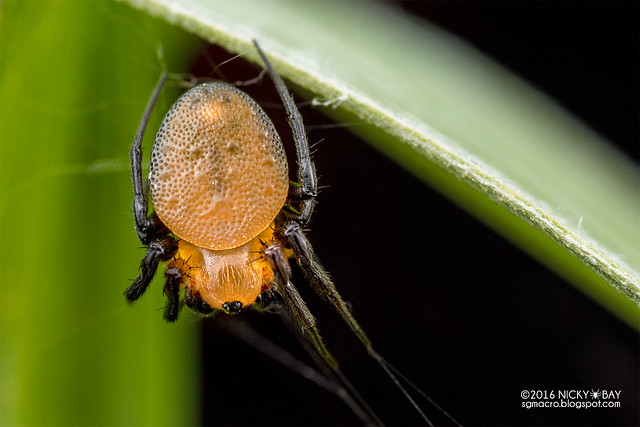
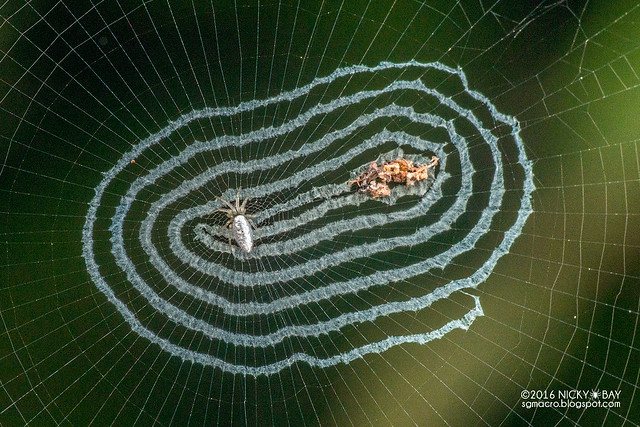
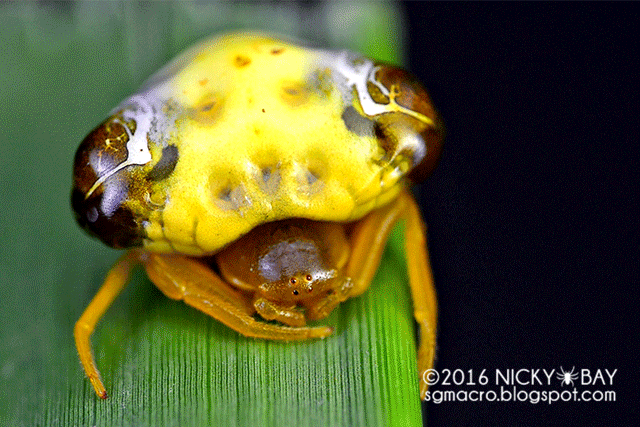

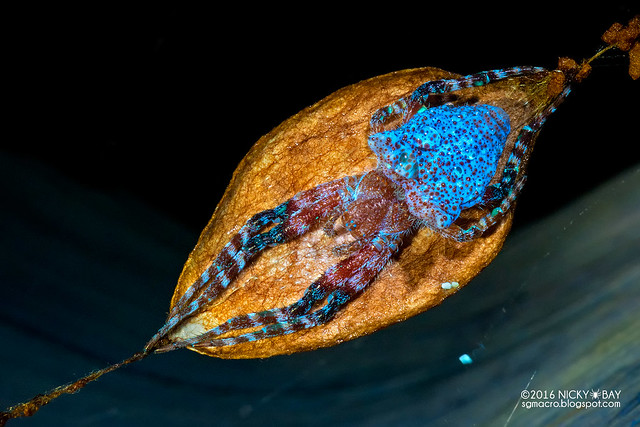
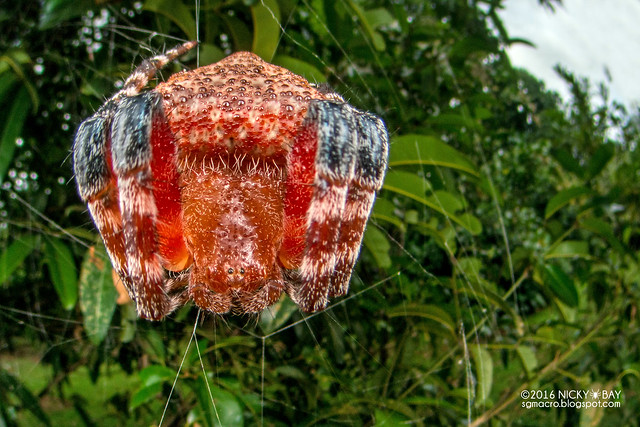


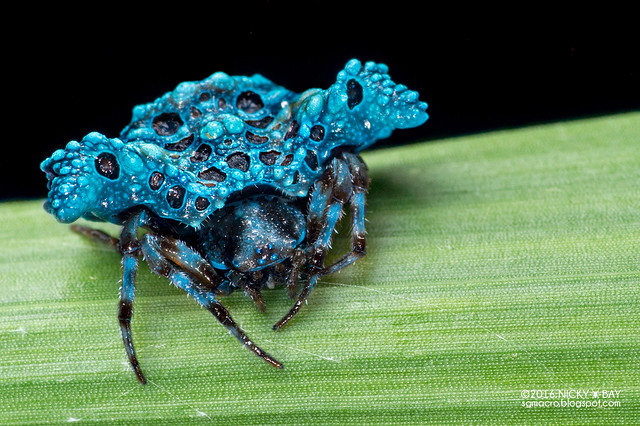
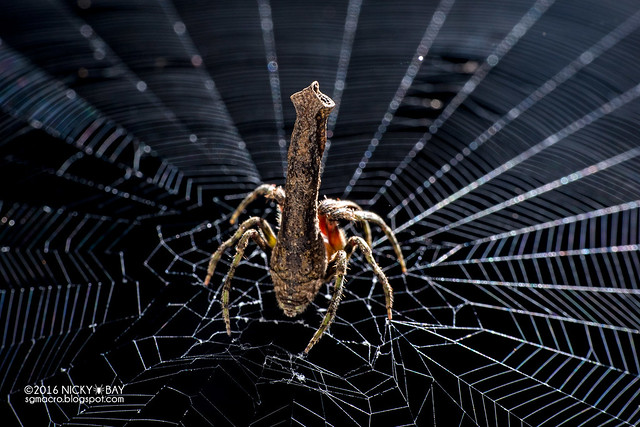

Barychelidae: Brush-Footed Trapdoor Spiders
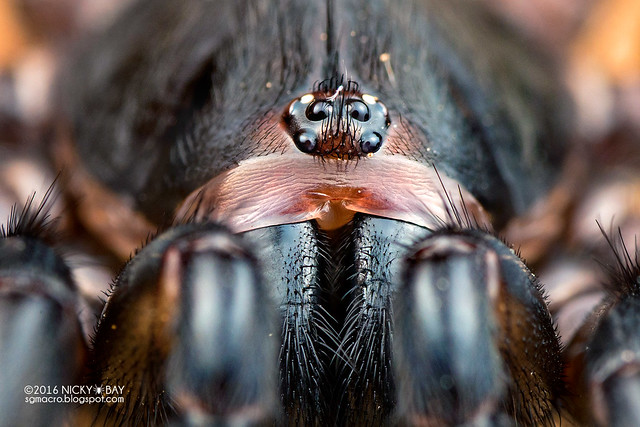
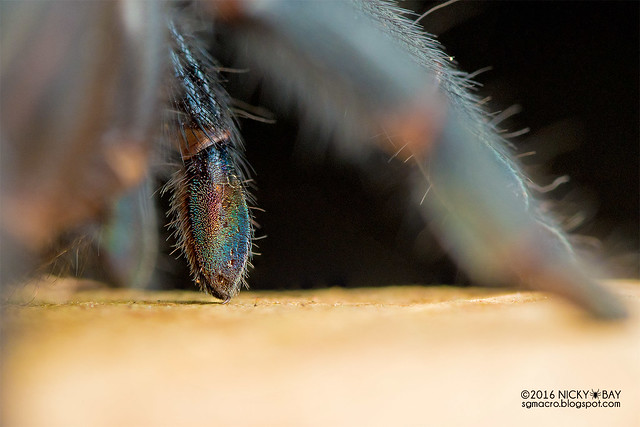
Corinnidae: Ant-Like Sac Spiders / Armored Spiders


Ctenidae: Wandering Spiders
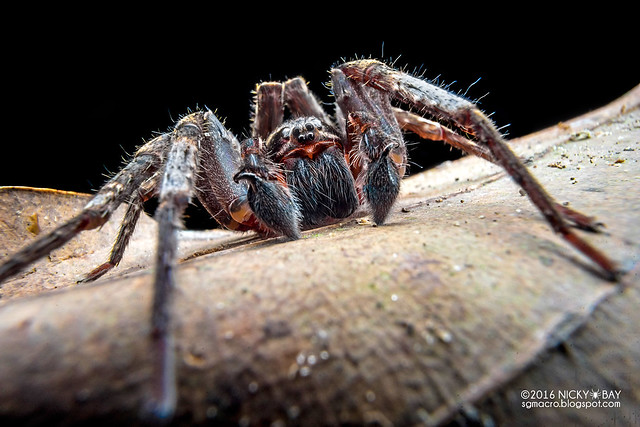
Lycosidae: Wolf Spiders

Nephilidae: Golden Orb Weavers, Coin Spiders, Hermit Spiders, etc.
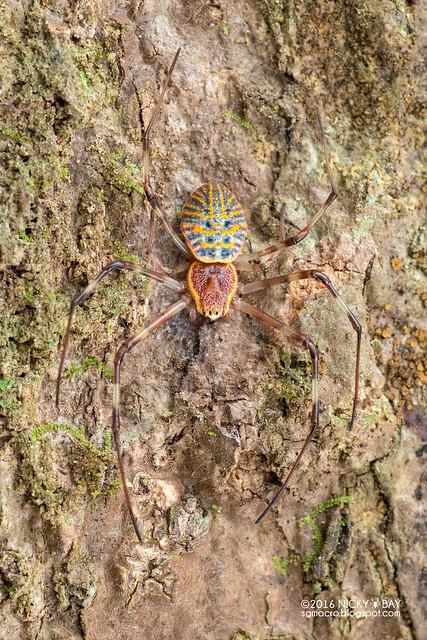

Oxyopidae: Lynx Spiders
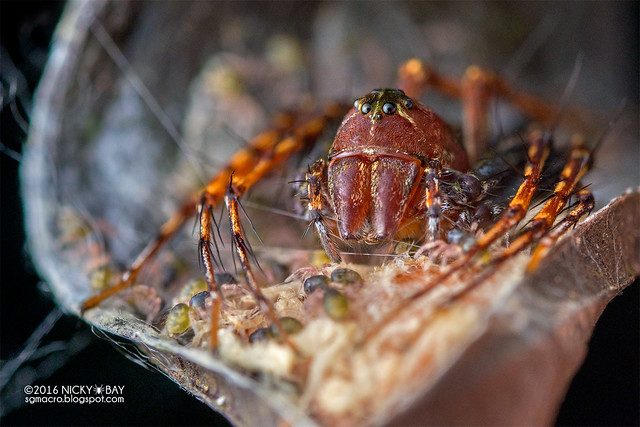

Psechridae: Pseudo Orb Weavers, Lace Sheet Spiders
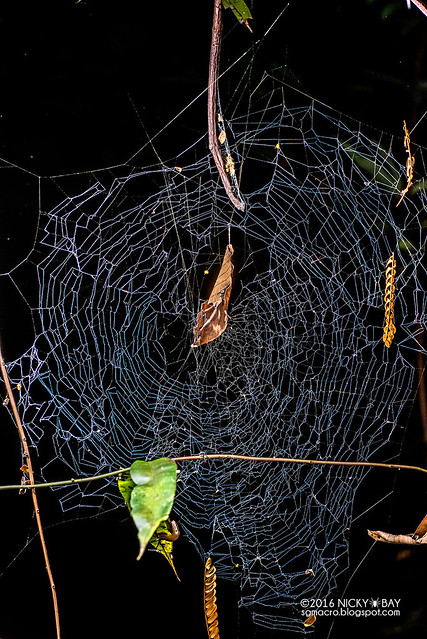
Pholcidae: Daddy-Long-Legs Spiders




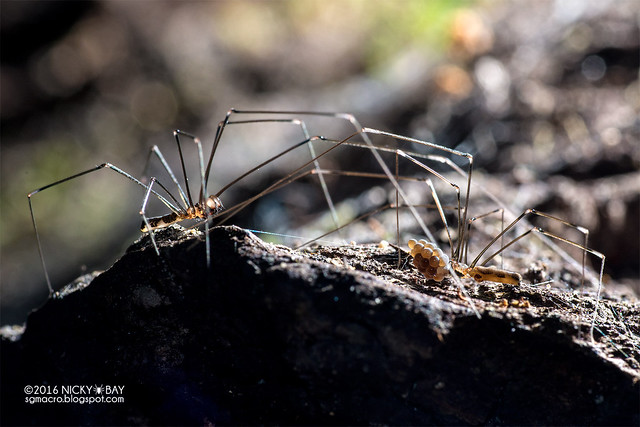
Salticidae: Jumping Spiders



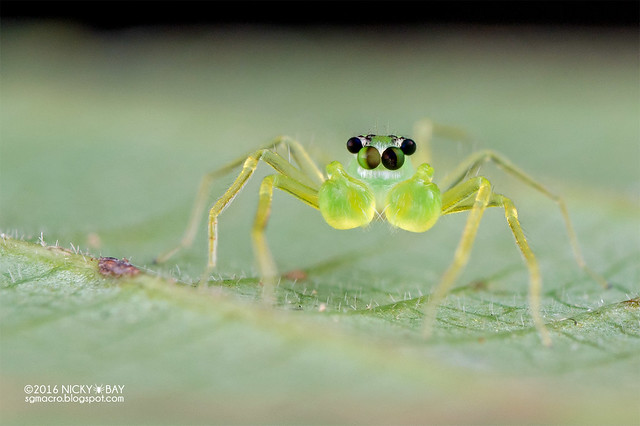
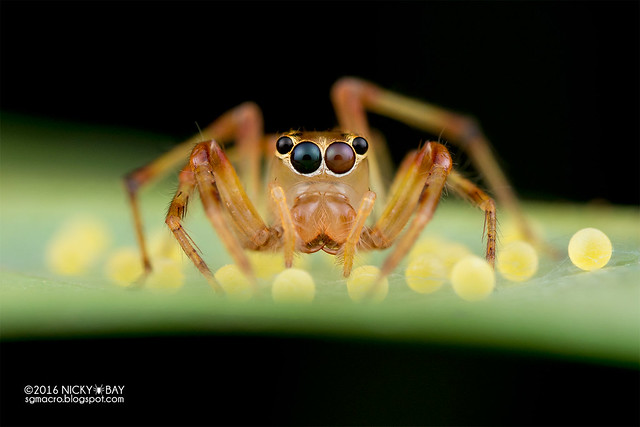
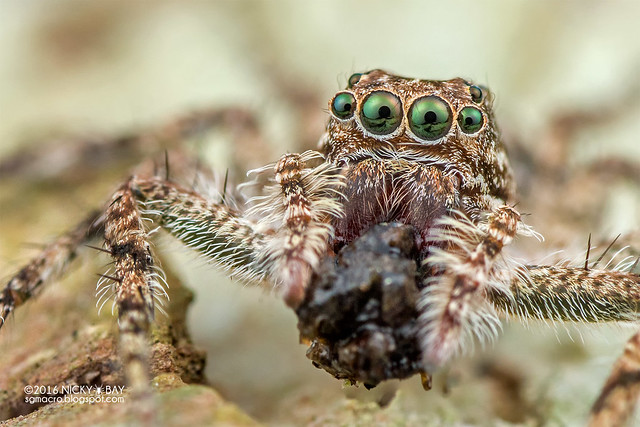


Sparassidae: Huntsman Spiders
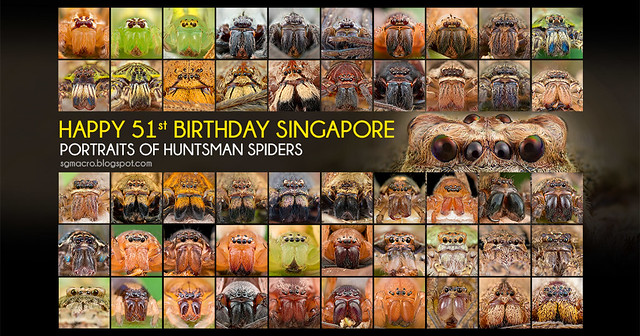
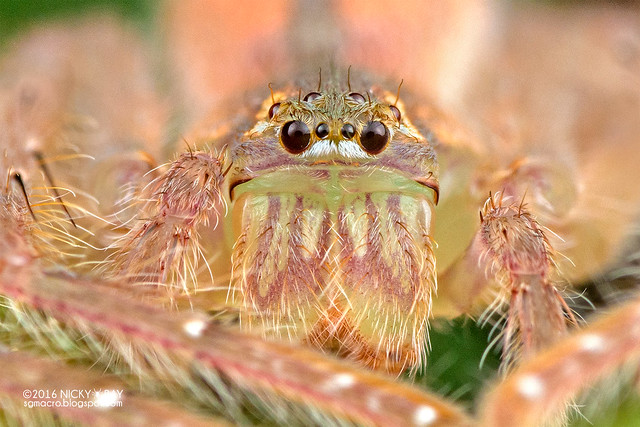






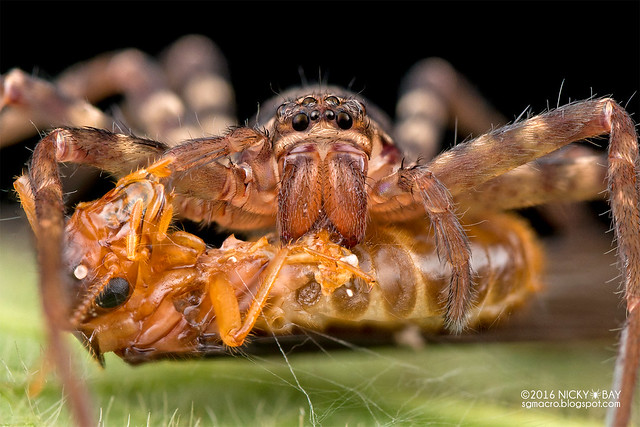

Theridiidae: Comb-Footed Spiders
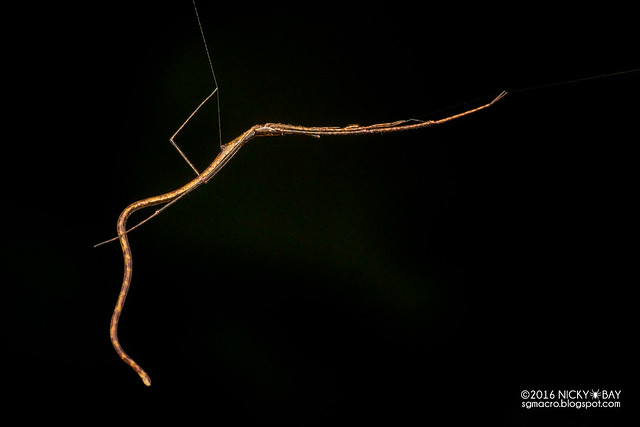

Theraphosidae: Tarantulas
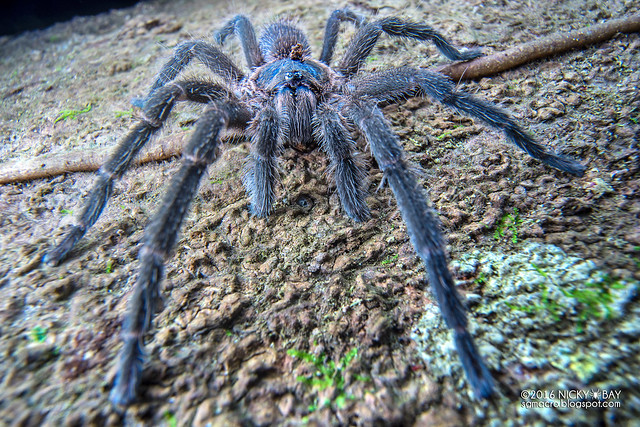
Thomisidae: Crab Spiders
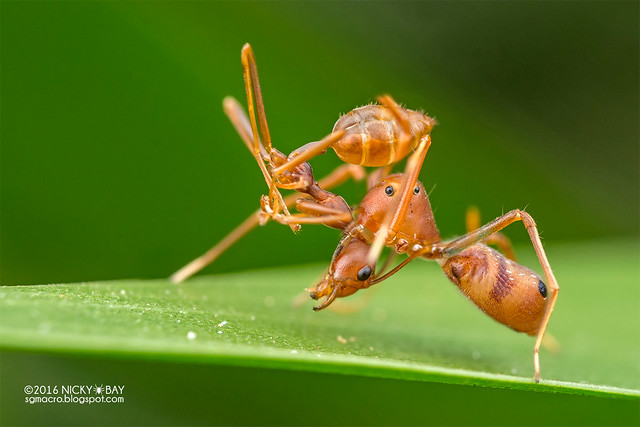
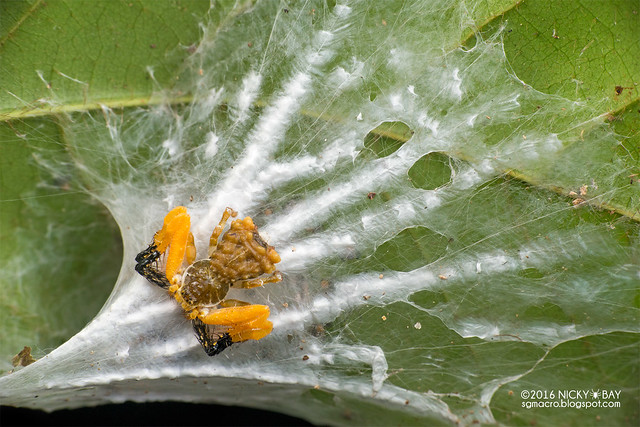
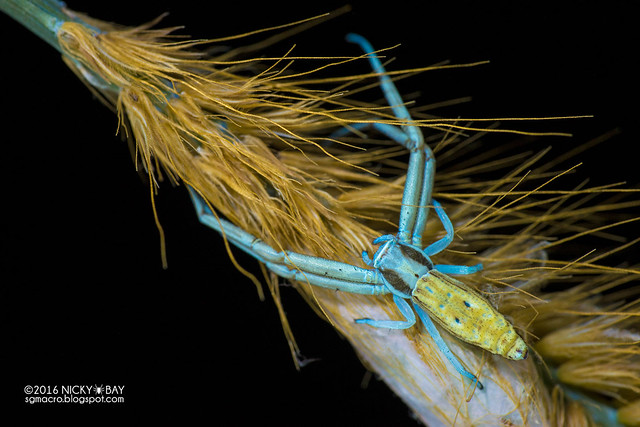
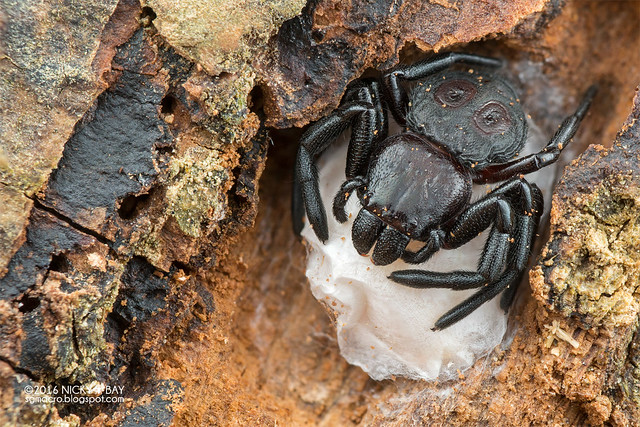
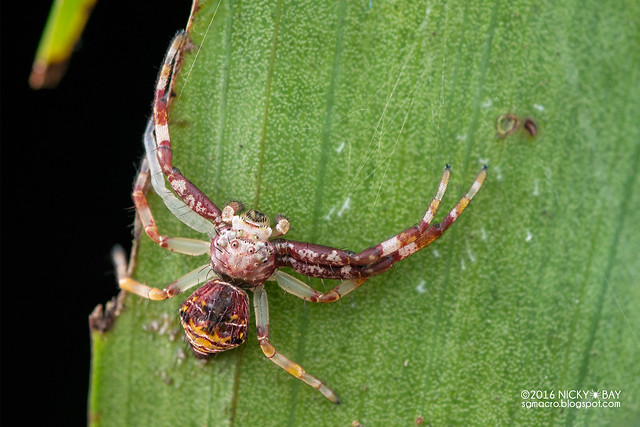



Uloboridae: Feather-Legged Spiders
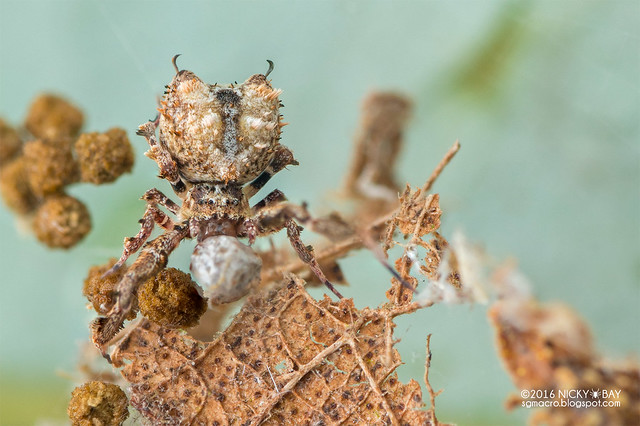
Opiliones: Harvestmen

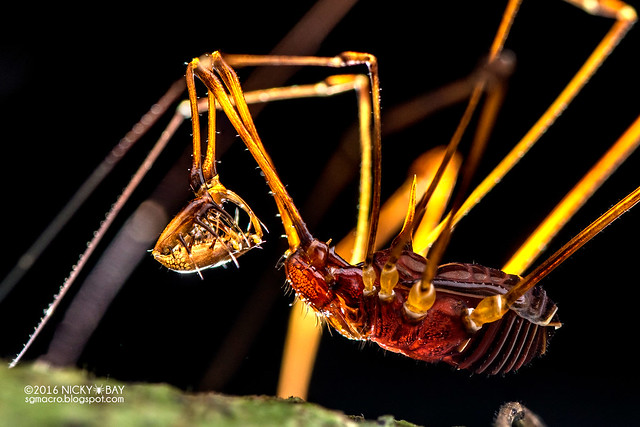
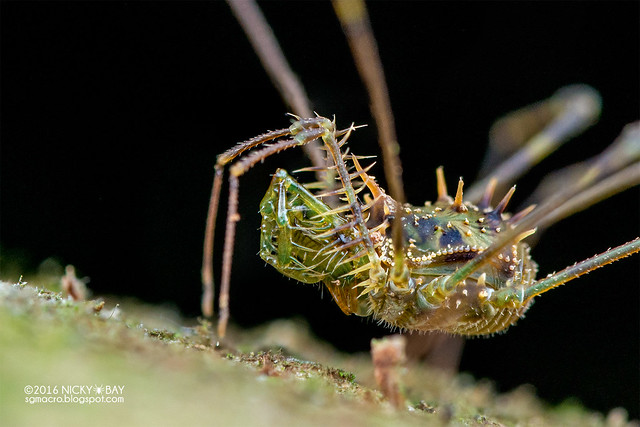
Schizomida: Shorttailed Whip Scorpions

Scorpiones: Scorpions

Amblypygi: Tailless Whip Scorpions
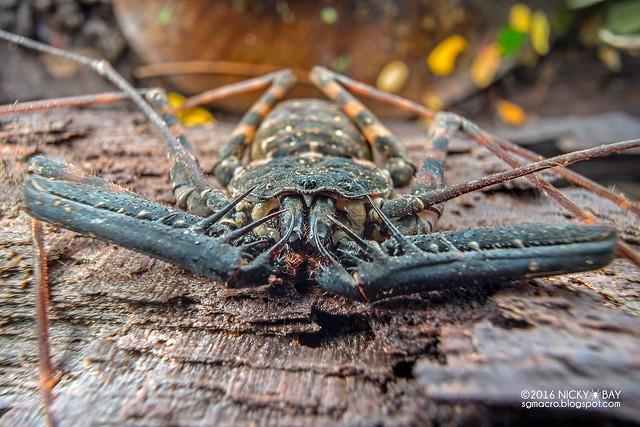
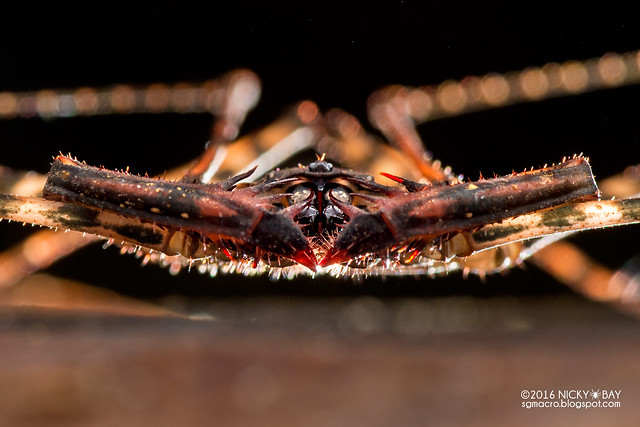
Thelyphonida: Whip Scorpion

Pseudoscorpionida: Pseudoscorpions
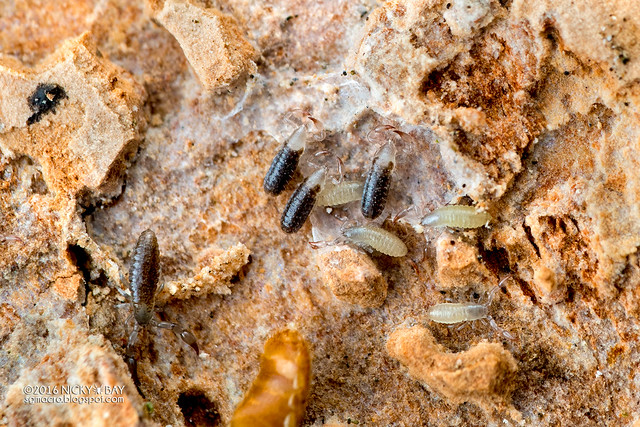
Coleoptera: Beetles
Buprestidae: Jewel Beetles


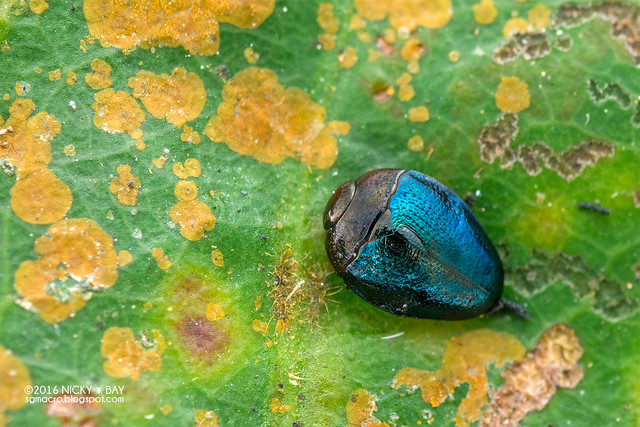
Cantharidae: Soldier Beetles

Carabidae: Ground Beetles


Cerambycidae: Longhorn Beetles
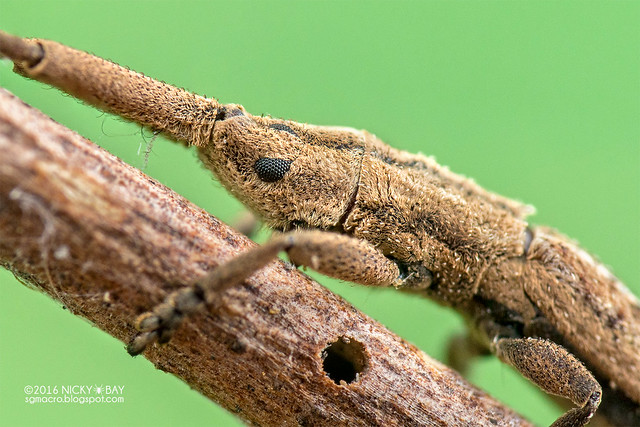
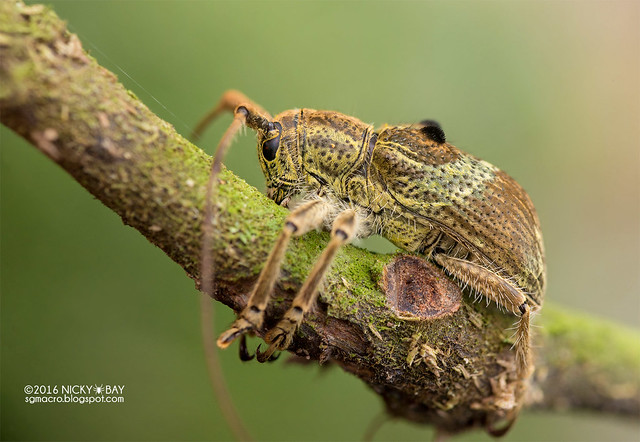
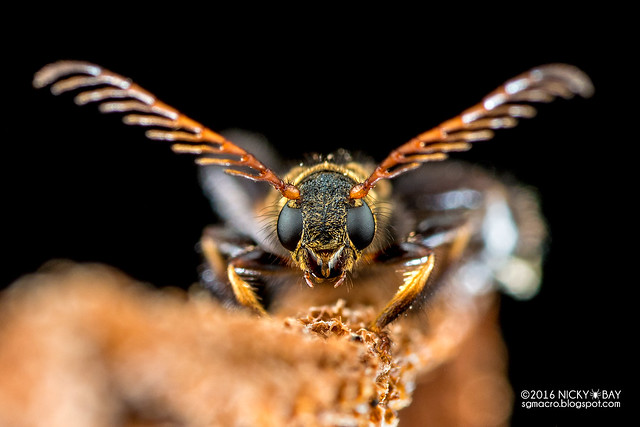
Chrysomelidae: Leaf Beetles

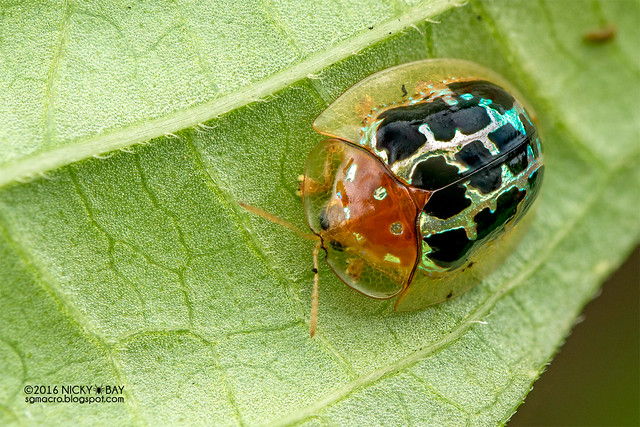
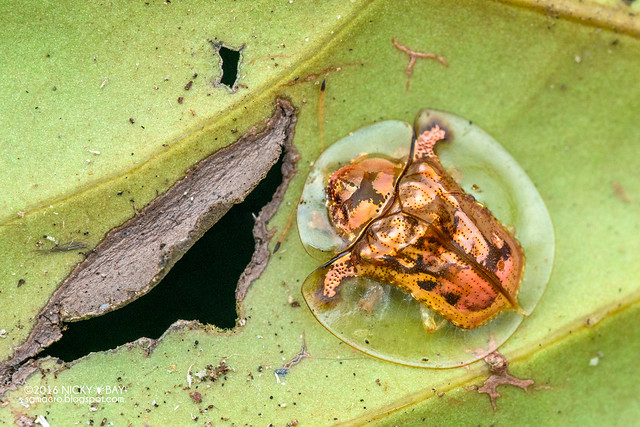
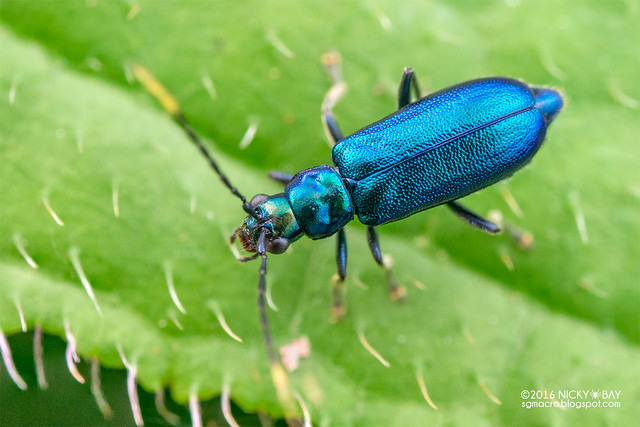
Coccinellidae: Ladybird Beetles
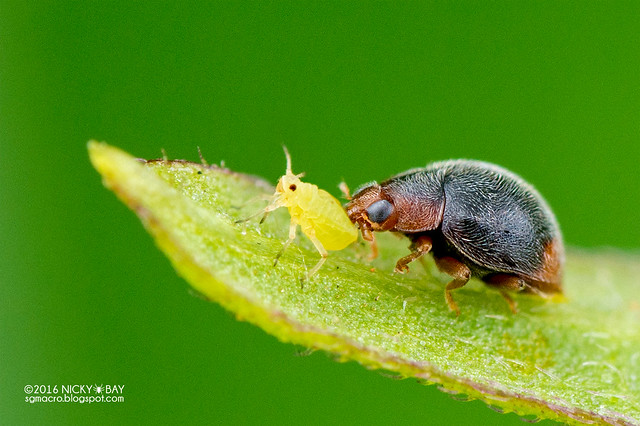
Endomychidae: Handsome Fungus Beetles
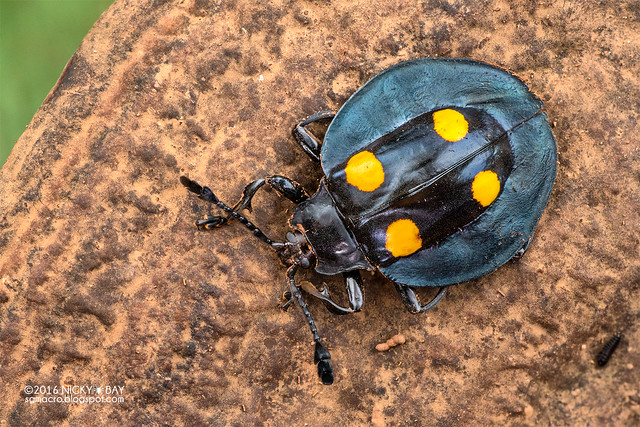

Lampyridae: Firefly Beetles

Lycidae: Net-Winged Beetles

Lymexylidae: Ship Timber Beetles

Nitidulidae: Sap Beetles

Scarabaeidae: Scarab Beetles

Staphylinidae: Shining Fungus Beetles
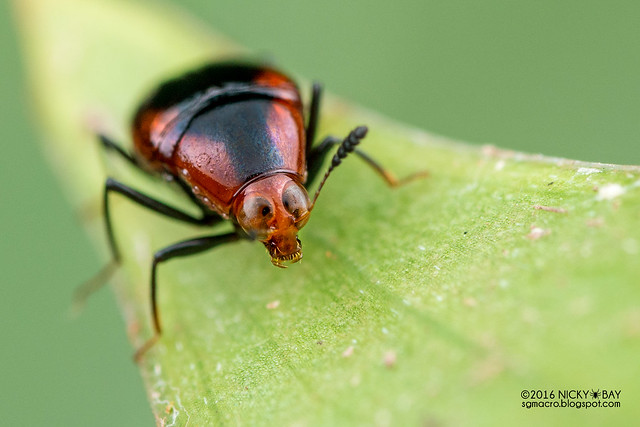
Tenebrionidae: Darkling Beetles
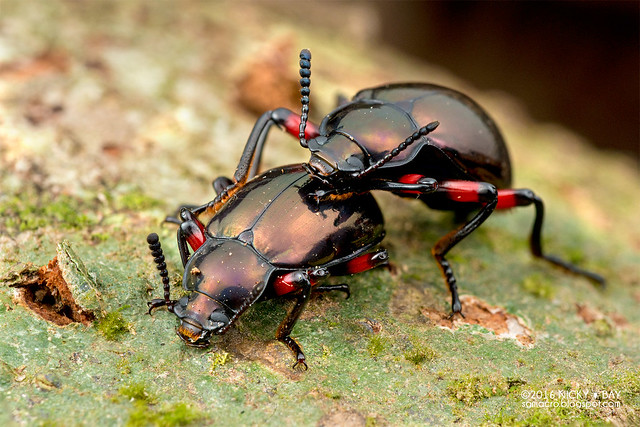
Hemiptera: True Bugs

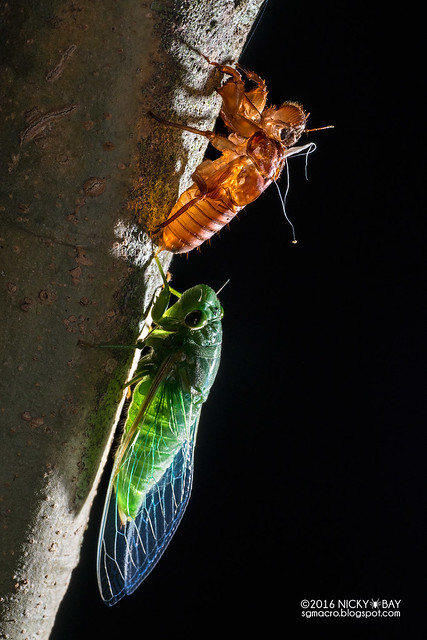
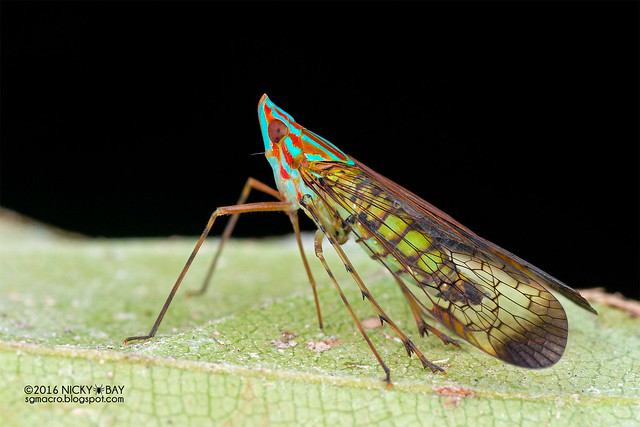
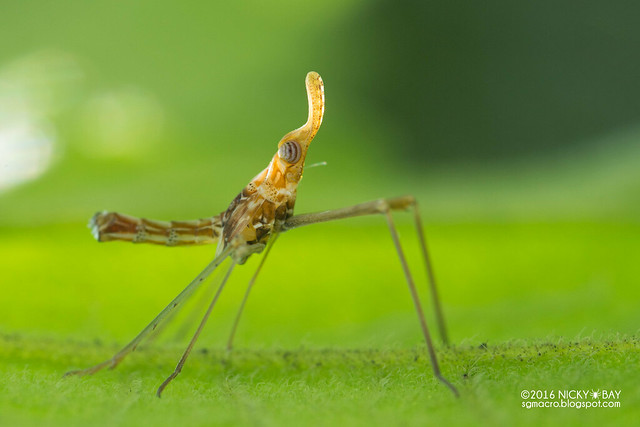
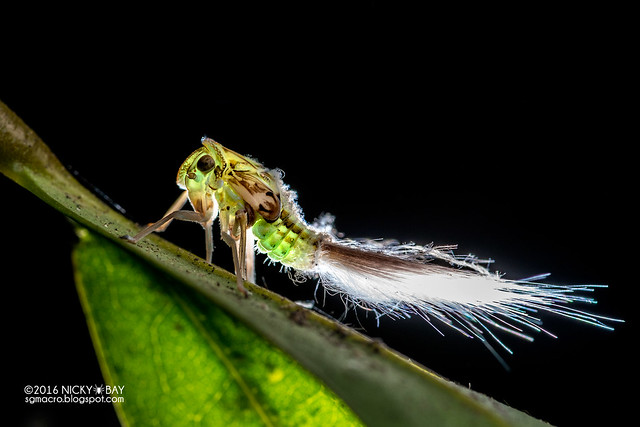

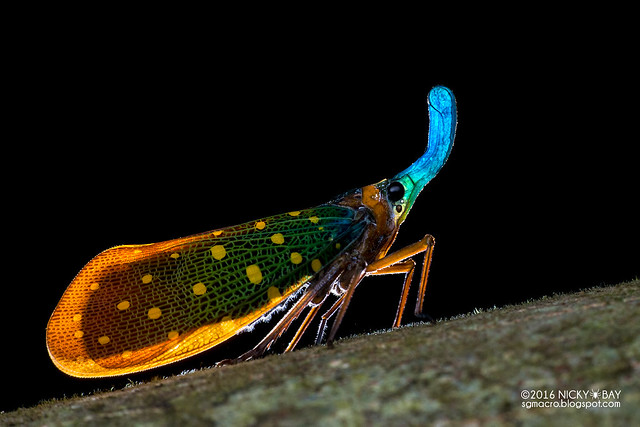
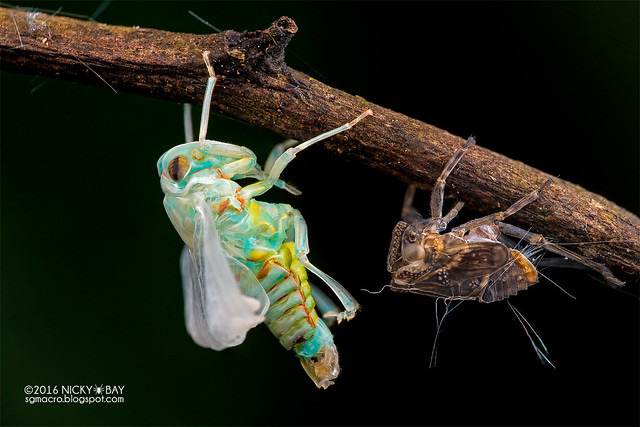



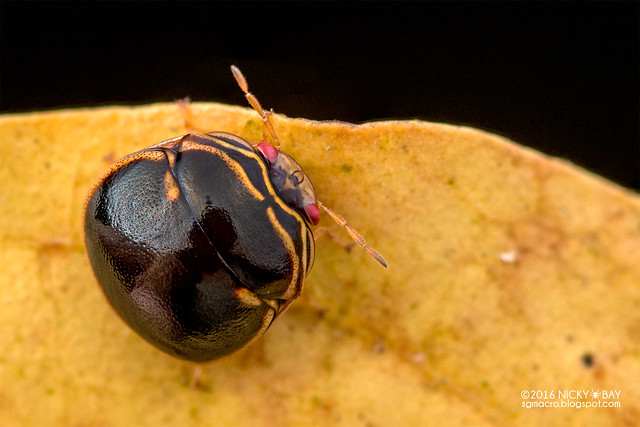
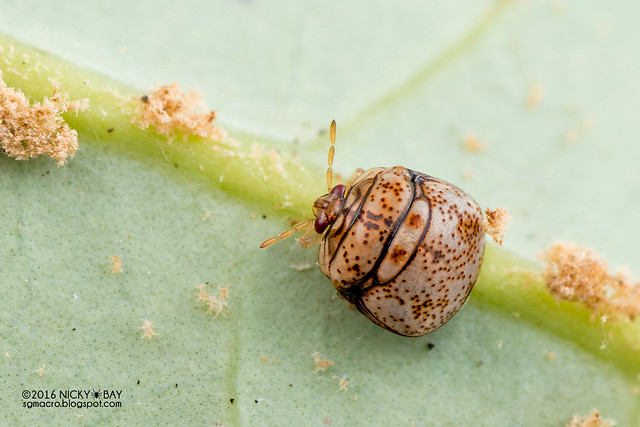


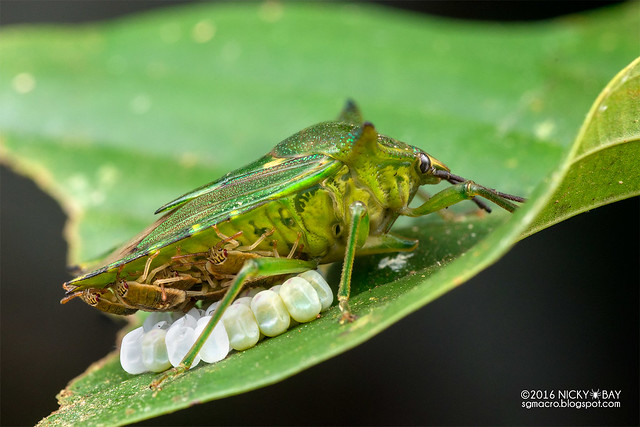
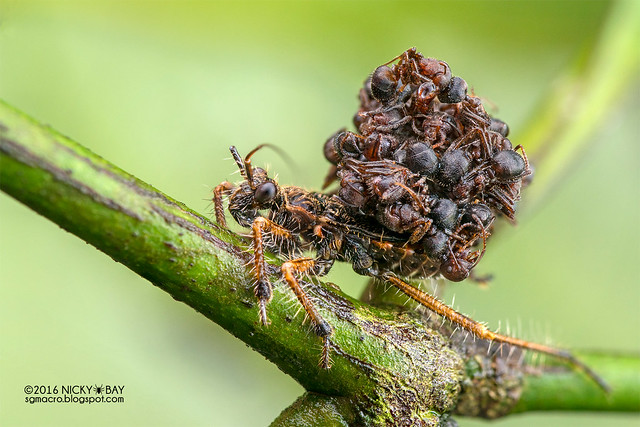

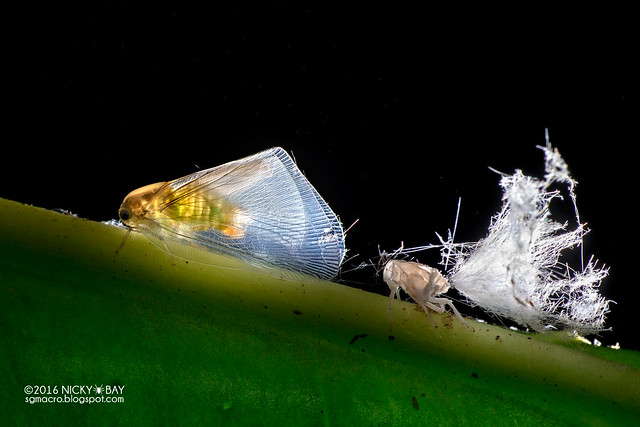
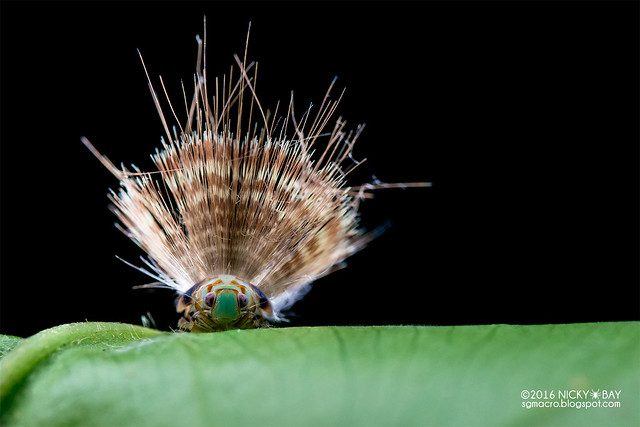
Blattodea: Cockroaches, Termites
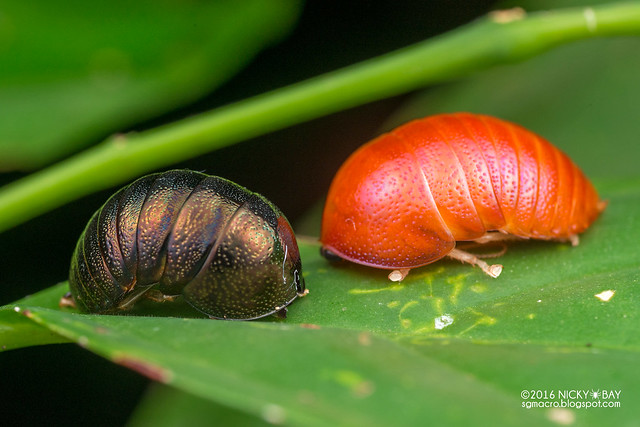
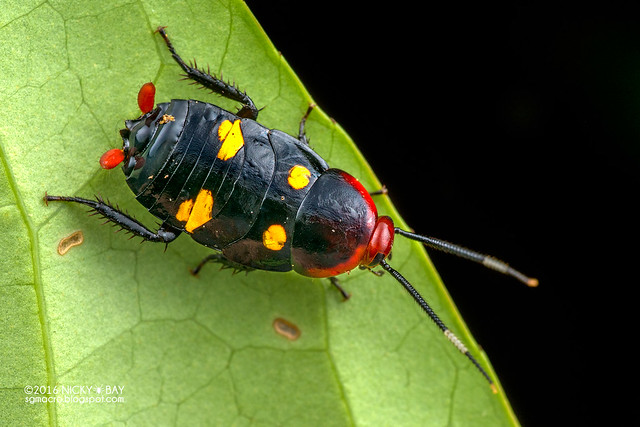
Diptera: Flies
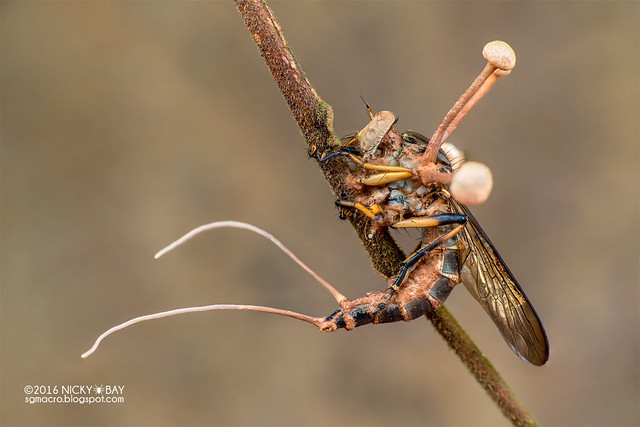


Hymenoptera: Wasps, Bees, Ants

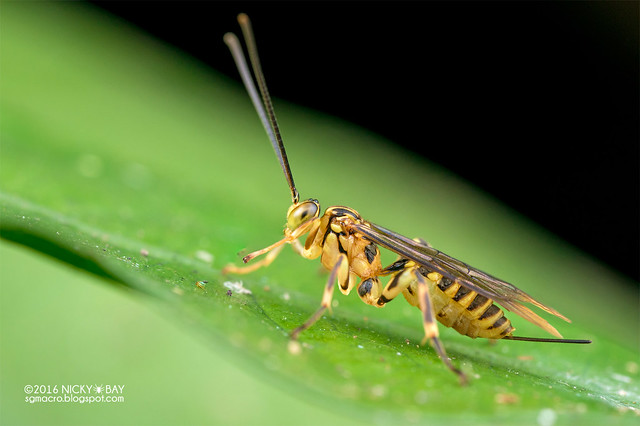

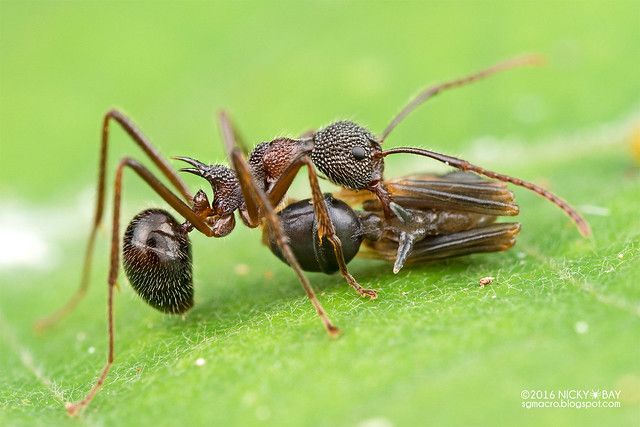
Lepidoptera: Butterflies, Moths
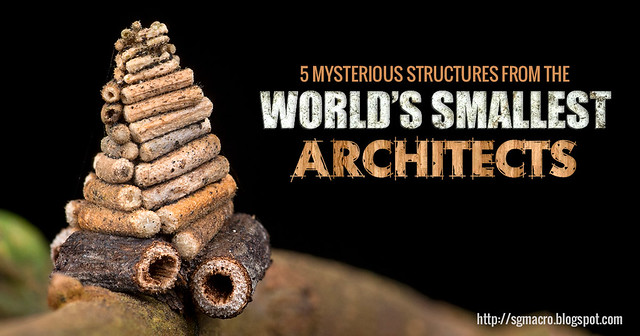
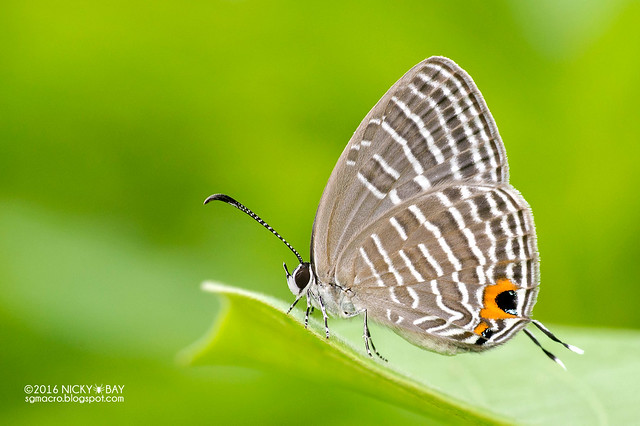

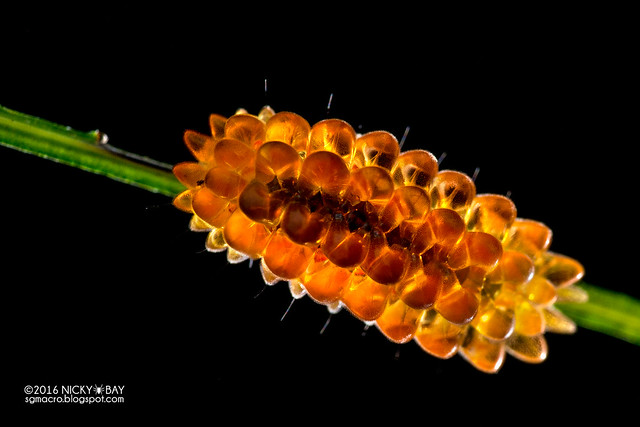

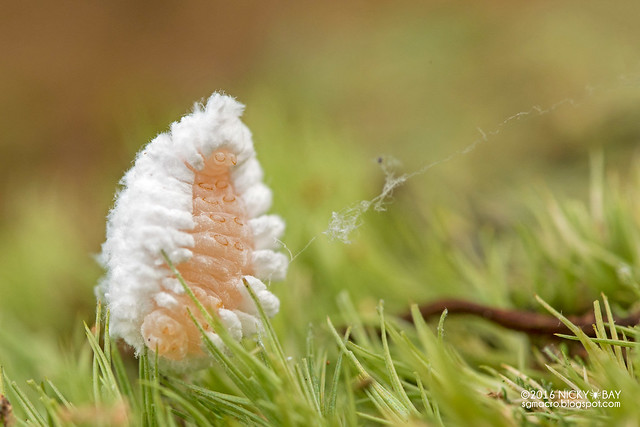
Mantodea: Mantises





Neuroptera: Net-Winged Insects

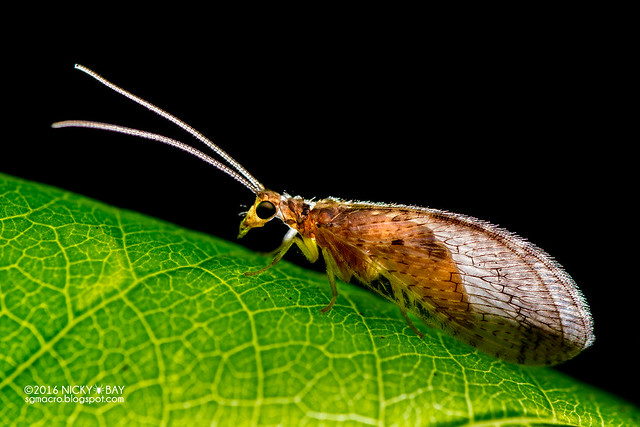
Odonata: Dragonflies, Damselflies
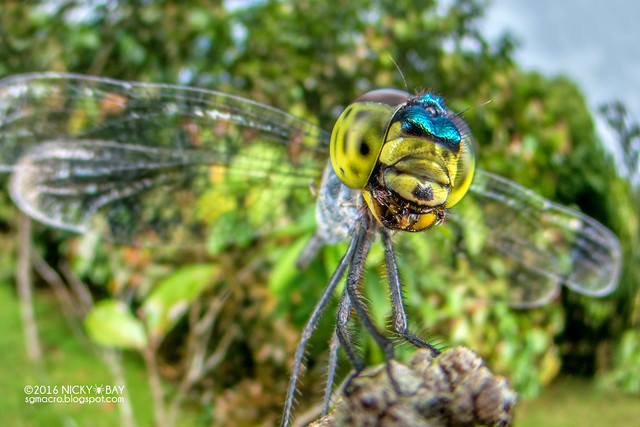

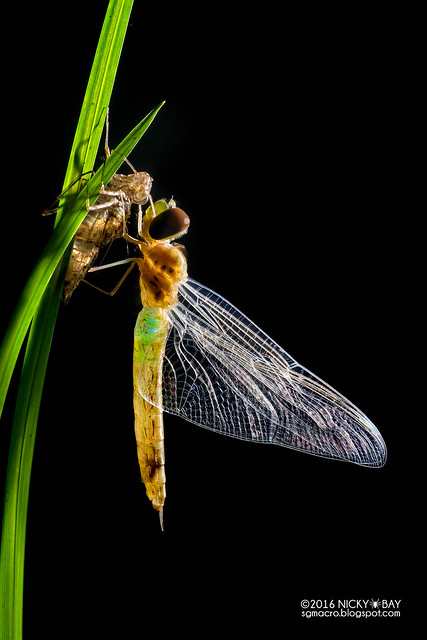
Orthoptera: Katydids, Grasshoppers, Crickets

Phasmatodea: Stick Insects


Myriapoda: Centipedes, Millipedes
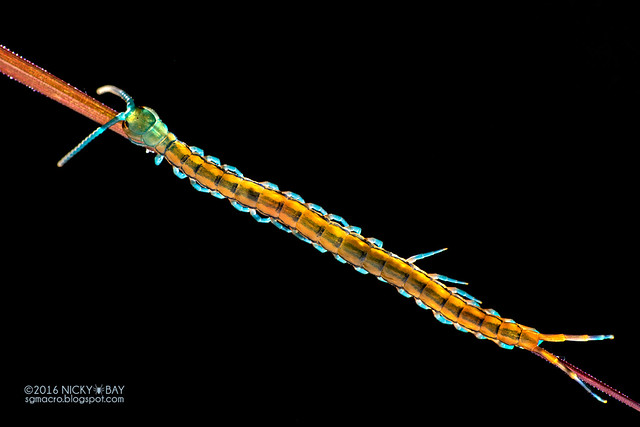



Gastropoda: Snails
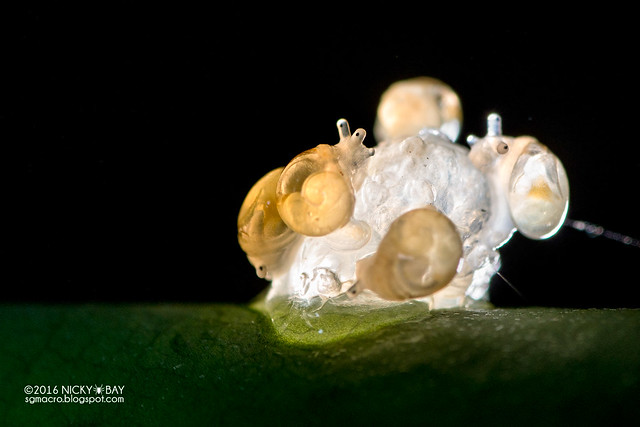
Onychophora: Velvet Worms
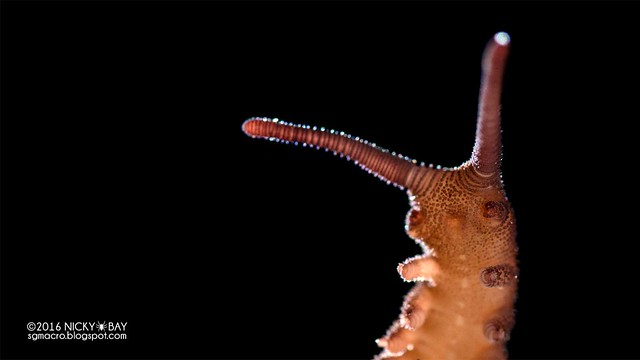
Reptilia: Reptiles

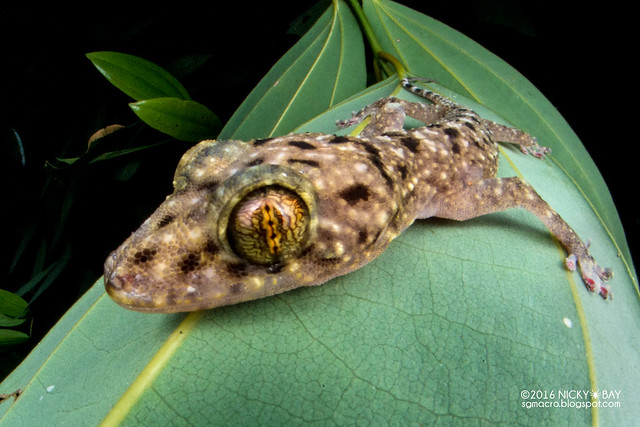
Aves: Birds

Plantae: Plants
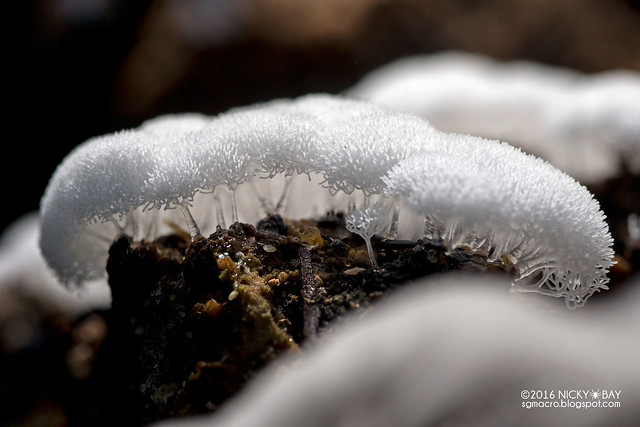


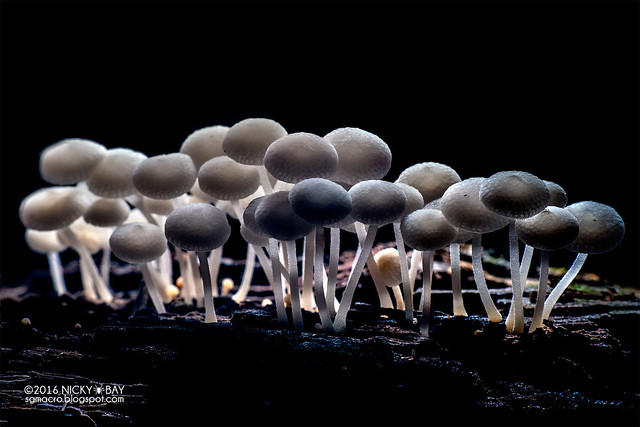
Non-Macro Highlights


